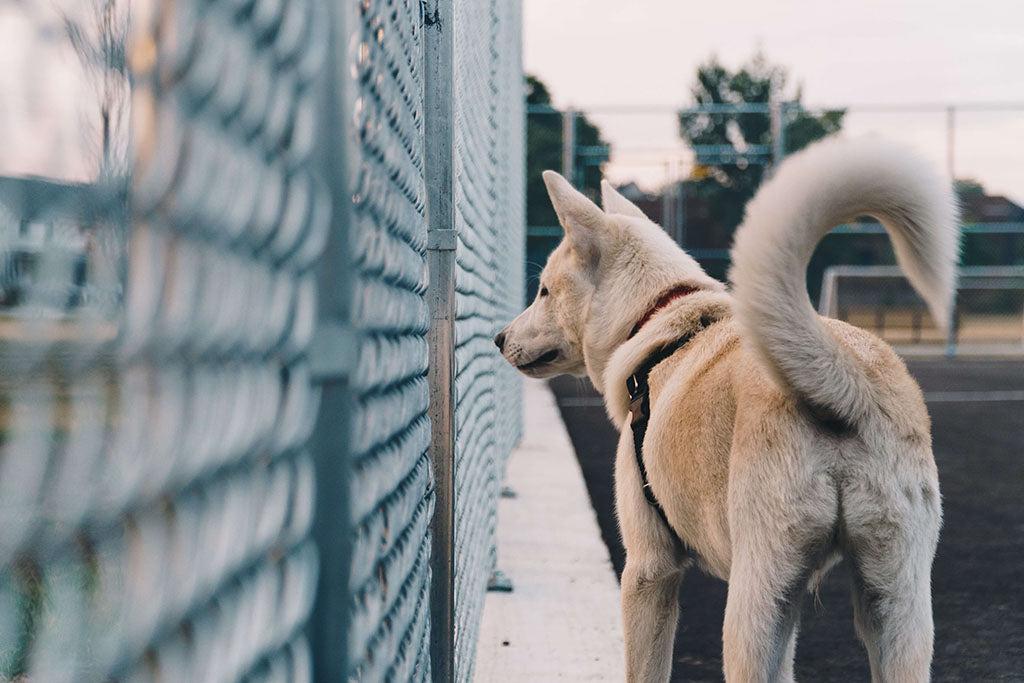Summary: If you’re wondering “why do dogs chase their tails?”, in this blog we learn what the reasons behind a dog chasing their tail are; why they do it, and what (if any) satisfaction they get from it… We’ve all seen a dog decide to chase the tip of their tail around themselves in […]
Why Do Dogs Chase Their Tails?

Summary: If you’re wondering “why do dogs chase their tails?”, in this blog we learn what the reasons behind a dog chasing their tail are; why they do it, and what (if any) satisfaction they get from it…
We’ve all seen a dog decide to chase the tip of their tail around themselves in a circle! They look like they’re having fun, and it’s usually comical to observe too, but do they even know the tail their chasing belongs to them? What’s the reason behind this seemingly playful behavior? What does it mean?
Let’s learn why dogs chase their tails…
Why Do Dogs Chase Their Tails?
In fact, there are many reasons behind dogs chasing their tails!
Something’s Wrong
One reason your dog is chasing their tail is simply because something about it is bothering them. They may have fleas or ticks or could be reacting to an environmental sensitivity. If your dog isn’t on regular flea and tick control, they should be – it’s our duty as responsible pet owners to protect our pup and others in our neighborhood! Check it with your vet if you need advice on flea and tick control or if this behavior is out of the blue, you may want to rule out anything being wrong with your dog and their health.

They’re Seeking Attention
If you laugh or praise your dog when they chase their tail, they may have processed this as a positive interaction as a result of the behavior (you may have even treated them for their tail chasing with one of our tasty PetLab Co. Salmon Bites)! So, they may simply be re-engaging by chasing their tail to obtain the same response from you and thus trigger your attention, affection, and may even another treat!
They’re Bored
If dogs are bored (and even more so with puppies), they may chase their tails to expend some pent-up energy or entertain themselves. Puppies also engage in this behavior more so than adult dogs as they tend to explore the world with their mouths (much like human babies!). In addition, they may view their tail as a toy and have not yet realized that their tail is a part of their body, so they can eventually grow out of this behavior once they hit maturity – which is any time between 12-18 months of age.
It’s In Their Genes
For reasons no one is quite sure of, some breeds engage in this behavior more than others. So, if you own a German Shepherd or a terrier, these breeds are more likely to turn to chasing their tails – but even more so if they want to be walked or interacted with.
If you’re not sure how long your dog needs to be walked every day, consult with your vet and check out our handy guide below:

It’s Compulsive
Dogs who have been (or are being) abused, neglected, frightened, have an injury or been injured in the past, been physically confined for extensive periods, received aggression from another pet, or experience emotional issues like separation anxiety can exhibit compulsive behaviors like chasing their tail as a way of comforting themselves and relieving stress.
If you suspect the tail chasing is compulsive (indicative signs are if they’re making the tail sore from biting or chewing it, or there’s hair loss occurring around the base or on their tail), it would be best to consult your vet and an ethical, reputable dog behaviorist who can help support you and your dog’s recovery from the compulsion.
They’re Getting Older
It’s not just puppies that exhibit this behavior more often; senior dogs can chase their tail as the natural aging process leads to their mental acuity diminishing. Repetitive behaviors like this in a dog’s senior years can indicate canine cognitive dysfunction (CCD), so it’s always worth raising with your vet if you spot your maturer dog (7+ years old) doing this.
Sources
“Why Do Dogs Chase Their Tails?” Purina https://www.purina.co.uk/articles/dogs/behaviour/understanding-dogs/why-dogs-chase-tails
“Why Do Dogs Chase Their Tails?”, Cesars Way Jun 18. 2015 https://www.cesarsway.com/why-do-dogs-chase-their-tails/
Authors Llera, Ryan BSc, DVM and Buzhardt, Lynn DVM “Why Dogs Chase Their Tails” VCA Hospitals https://vcahospitals.com/know-your-pet/why-do-dogs-chase-their-tails
 S
S



